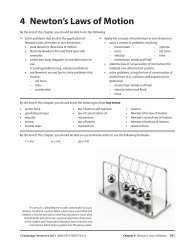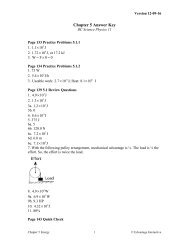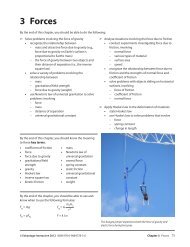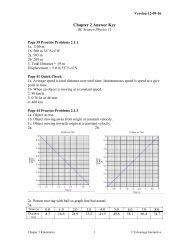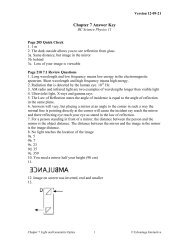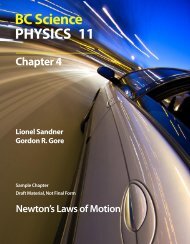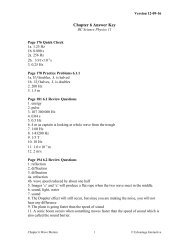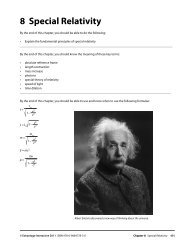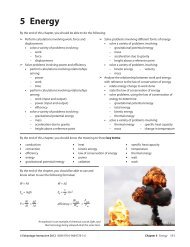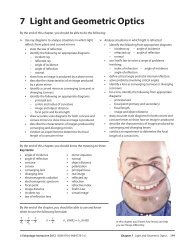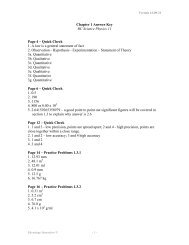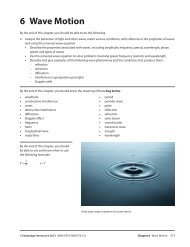2 Kinematics - BC Science Physics 11
2 Kinematics - BC Science Physics 11
2 Kinematics - BC Science Physics 11
Create successful ePaper yourself
Turn your PDF publications into a flip-book with our unique Google optimized e-Paper software.
2.2 Review Questions<br />
1. A policeman travelling 60 km/h spots a speeder<br />
ahead, so he accelerates his vehicle at a steady rate<br />
of 2.22 m/s 2 for 4.00 s, at which time he catches up<br />
with the speeder.<br />
(a) How fast was the policeman travelling in m/s?<br />
(b) How fast is the police car travelling after 4.00 s?<br />
Give your answer in both m/s and km/h.<br />
(c) If the speeder has a constant velocity, sketch the<br />
motion of both the speeder and police car on a<br />
speed vs. time graph below.<br />
2. A motorbike accelerates at a constant rate from a<br />
standing start. After 1.2 s, it is travelling 6.0 m/s. How<br />
much time will have elapsed (starting from rest)<br />
before the bike is moving with a speed of 15.0 m/s?<br />
3. The graph below shows lines representing speed<br />
vs. time for an accelerating aircraft, prepared by<br />
observers at two different locations on the runway.<br />
52 Chapter 2 <strong>Kinematics</strong> © Edvantage Interactive 2012 ISBN 978-0-9864778-3-6<br />
��������������<br />
����<br />
����<br />
����<br />
����<br />
����<br />
����<br />
����<br />
��������������<br />
��� ���<br />
�<br />
�<br />
�� ����� ����� ����� ����� ����� ����<br />
�����������<br />
(a) What is the equation for line (a)?<br />
(b) What is the equation for line (b)?<br />
(c) What is the acceleration of the aircraft according<br />
to line (a)?<br />
(d) What is the acceleration of the aircraft according<br />
to line (b)?<br />
(e) Explain why the y-intercept for line (b) is<br />
different than the intercept for line (a).



